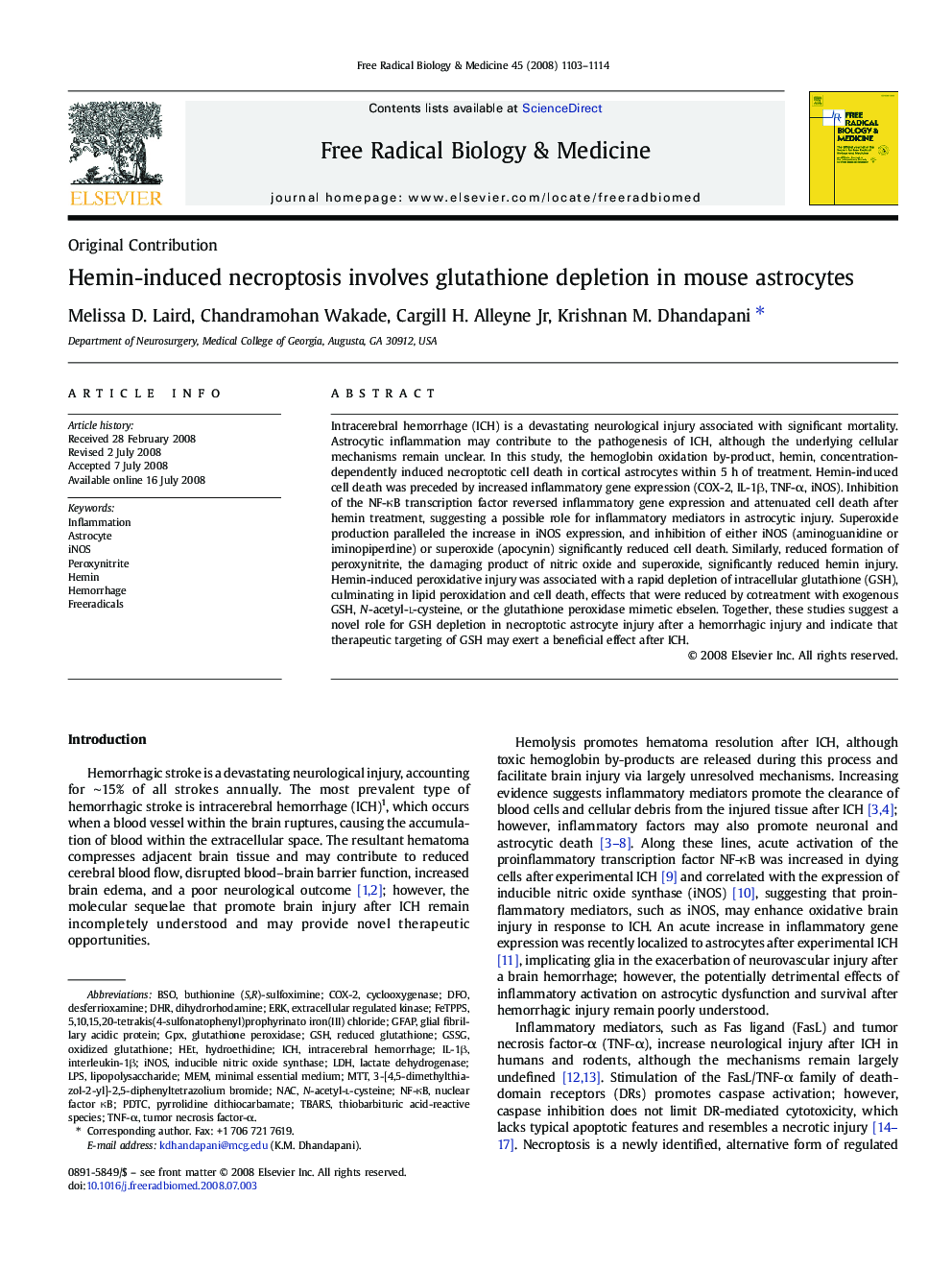| Article ID | Journal | Published Year | Pages | File Type |
|---|---|---|---|---|
| 1910553 | Free Radical Biology and Medicine | 2008 | 12 Pages |
Intracerebral hemorrhage (ICH) is a devastating neurological injury associated with significant mortality. Astrocytic inflammation may contribute to the pathogenesis of ICH, although the underlying cellular mechanisms remain unclear. In this study, the hemoglobin oxidation by-product, hemin, concentration-dependently induced necroptotic cell death in cortical astrocytes within 5 h of treatment. Hemin-induced cell death was preceded by increased inflammatory gene expression (COX-2, IL-1β, TNF-α, iNOS). Inhibition of the NF-κB transcription factor reversed inflammatory gene expression and attenuated cell death after hemin treatment, suggesting a possible role for inflammatory mediators in astrocytic injury. Superoxide production paralleled the increase in iNOS expression, and inhibition of either iNOS (aminoguanidine or iminopiperdine) or superoxide (apocynin) significantly reduced cell death. Similarly, reduced formation of peroxynitrite, the damaging product of nitric oxide and superoxide, significantly reduced hemin injury. Hemin-induced peroxidative injury was associated with a rapid depletion of intracellular glutathione (GSH), culminating in lipid peroxidation and cell death, effects that were reduced by cotreatment with exogenous GSH, N-acetyl-l-cysteine, or the glutathione peroxidase mimetic ebselen. Together, these studies suggest a novel role for GSH depletion in necroptotic astrocyte injury after a hemorrhagic injury and indicate that therapeutic targeting of GSH may exert a beneficial effect after ICH.
